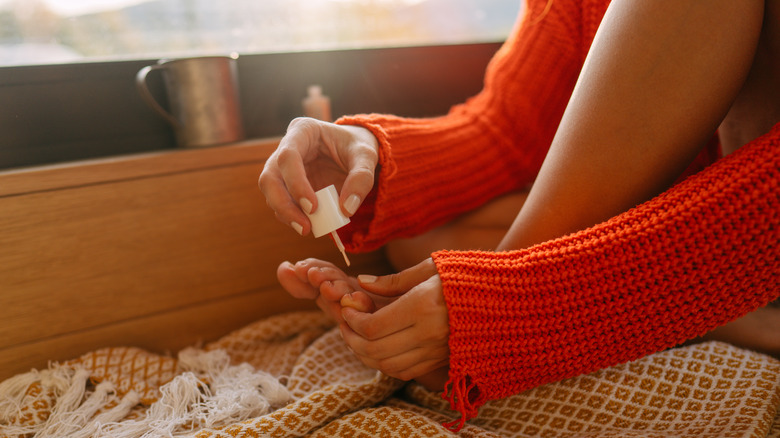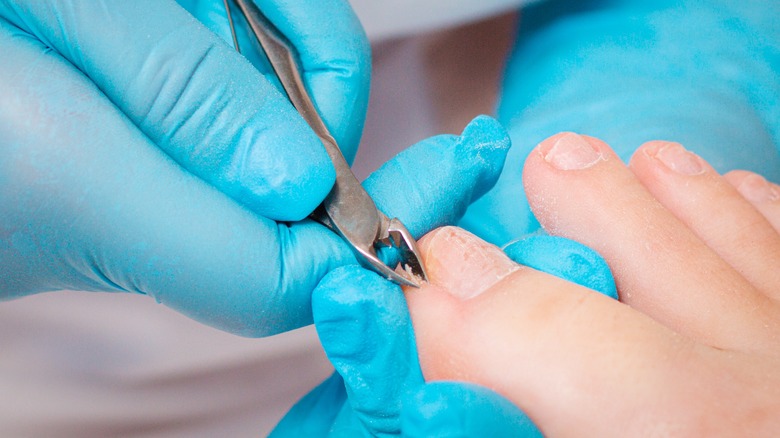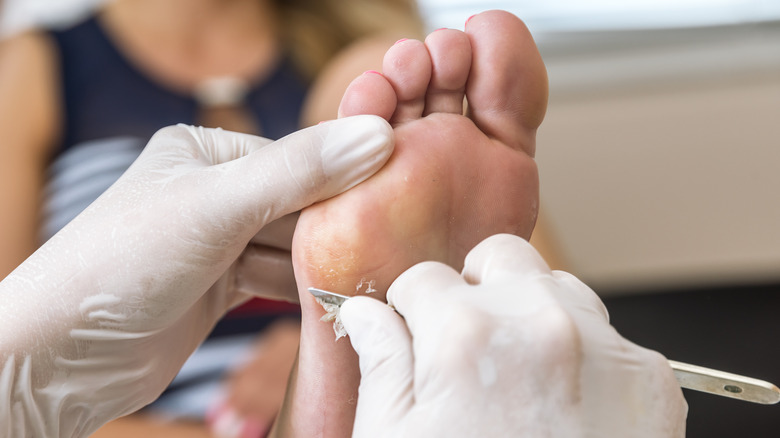Waterless Pedicures Are Full Of Benefits For Your Toe Nails — Here's What To Know
There's new a pedicure trend on the horizon and it's one you want to know all about: waterless pedicures. Yes, you read that correctly: waterless, meaning not a drop in sight and completely dry. What that means is that the soaking part of the pedicure is entirely skipped, and the pedicurist gets straight to work on your feet.
"The nail technician focuses on prepping and shaping the nails using specialized tools and techniques," said Mazz Hanna, nail artist and CEO of Nailing Hollywood, told InStyle. "It depends on the manicurist, but many use electric files for dry manicures."
If you've been doing traditional pedicures your whole life, the idea of a waterless pedicure might seem strange or like some fancy new technique, but neither one of those is the case. Not everyone wants to soak their feet in a tub of warm water before a pedicure, so it's nice that dry pedicures are becoming more common and that more places are offering them.
Benefits of dry pedicures
A major plus about dry pedicures is how much of a time-saver they are. If you're someone who barely has enough hours in the day to do what you need to do, let alone what you want to do, skipping the soaking sesh definitely makes a difference. It's also far more sanitary because water, like anything moisture-related, is a germ fiesta in the making. "Anytime you're dealing with skin or other gunk in a tub, especially a tub with jets, that gunk can come right back into the water, even if you clean the heck out of the thing," founder of Nashville-based waterless nail salon Poppy & Monroe, Karen Kops, told Byrdie.
It also turns out that waterless pedis are better for nails in general. "The nail plate is porous and therefore absorbs water while soaking, leading it to expand," celebrity manicurist Deborah Lippman told PS. "If you apply polish to an expanded nail, the polish will not adhere as well and is [likely] to chip when the nail dries out and shrinks back to its normal state."
Last, but certainly not least, dry pedicures are far better for the environment because you're not wasting one of our planet's most precious resources: water. It's estimated that every pedicure uses (read: wastes) between 13 and 18 gallons of water. If you multiply that by all the pedicures an average salon does in a week, you're looking at thousands of gallons of water down the drain.
What to expect during a waterless pedicure
For starters, there won't be any water. Instead, your feet will be cleaned with a hot towel and an exfoliating scrub. "Calluses are still removed and the feet and lower legs are exfoliated, massaged, and moisturized, but there is no wet soak," board-certified dermatologist, Dr. Dana Stern, M.D., told Bustle. After all, part of the joy of pedicures is ditching those calluses and getting your feet as soft as possible. Then, the nails and cuticles are shaped, clipped, and receive whatever other maintenance they need before heading into the final step: nail polish. Will you give the neon pedicure trend a try, or keep things subtle with muted pastels instead? With so many nail trends to choose from, this is going to be the most difficult part of your pedicure.
But as beneficial as dry pedicures can be, some people not only prefer water pedicures, but need them because of the type of skin they have. For example, excessively dry skin or conditions like eczema can benefit from a proper soaking before a pedicure.
The type of pedicure you want is your call and should be based on what your skin needs and what you want for a pedicure. No matter which way you go, it's great to have options to choose from, and, even better, both types of pedicures cost about the same.


